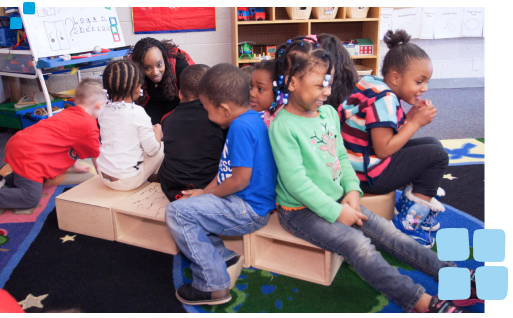research
Perry Preschool Project
Date: 1962–1967
Categories: Early Childhood Education
HighScope’s Perry Preschool Study began as a research project, conducted from 1962–1967 by a small school-reform group in Ypsilanti, Michigan, and was born of the need to answer the question, “Does participation by underserved children in an early education program improve their intellectual and academic abilities?” To answer this challenging question, the group’s organizer, visionary psychologist David Weikart, identified 123 preschool children with risk factors of school failure who were then randomly assigned to one of two groups. In collaboration with Perry Elementary School principal Charles Eugene Beatty, a high-quality preschool program was established at Perry Elementary. The 58 children in the program group entered the high-quality preschool program, while the no-program group, consisting of the other 65 identified children, received no formal preschool programming.
The Perry Project led to a longitudinal study to follow the Perry Preschool participants throughout their lives. This landmark study, dubbed the Perry Preschool Study, established the lasting human and financial value of early childhood education and led to the establishment of the HighScope Educational Research Foundation.


The Longitudinal Study
Perry — Through Age 40
The longitudinal study found that at age 40, participants who experienced the preschool program:
- Were less likely to experience teenage pregnancy
- Were more likely to graduate from high school
- Were more likely to maintain employment and have higher earnings
- Were less likely to commit crimes
- Were more likely to own a home and a car

Longitudinal Study Results
HighScope’s longitudinal study confirms the lifetime effects of high-quality early childhood education, such as intellectual and social development in childhood and future school success, economic performance, and reduced commission of crime in adulthood. The Perry Preschool Study indicates that the return to the public on its initial investment in such programs is substantial.
IQ 90+ AT AGE 5
- Program Group 77%
- Non-Program Group 60%
BASIC ACHIEVEMENT AT AGE 14
- Program Group 55%
- Non-Program Group 36%
HOMEWORK AT AGE 15
- Program Group 61%
- Non-Program Group 38%
GRADUATED HIGH SCHOOL
- Program Group 77%
- Non-Program Group 60%
ARRESTED 5+ TIMES BY AGE 14
- Program Group 40%
- Non-Program Group 60%
EARNED $20,000+ AT AGE 20
- Program Group 60%
- Non-Program Group 40%
Understanding the Impact of the Perry Study
The findings of HighScope’s Perry Preschool Study, showing the benefits of early education, were confirmed and strengthened with the research of Nobel Prize winning economist, James Heckman, who demonstrated the lasting, intergenerational financial benefits of high-quality early childhood education through the outcomes of Perry Study participants.
